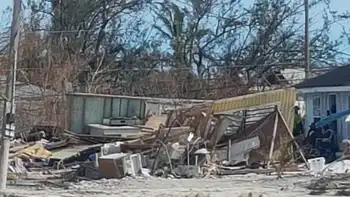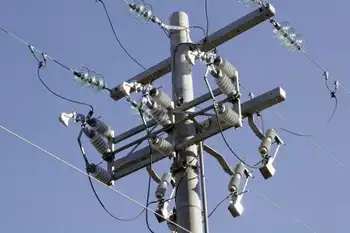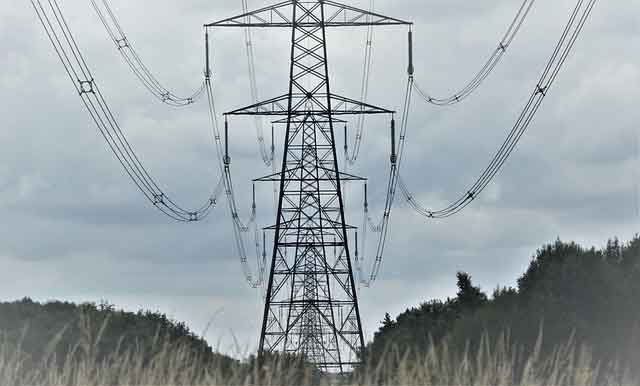Canada Manufacturing Policy prioritizes affordable energy, trims carbon taxes, aligns with Buy America, and supports the resource sector, PPE and plastics supply, nearshoring, and resilient supply chains amid COVID-19, correcting costly green energy policies.
Key Points
A policy to boost industry with affordable energy, lower carbon taxes, resource ties, and aligned U.S. trade.
✅ Cuts energy costs and carbon tax burdens for competitiveness
✅ Rebuilds resource-sector linkages and domestic supply chains
✅ Seeks Buy America relief and clarity on plastics regulation
By Jocelyn Bamford
Since its inception in 2017, the Coalition of Concerned Manufacturers and Businesses has warned all levels of government that there would be catastrophic effects if policies that drove both the manufacturing and natural resources sectors out of the country were adopted.
The very origins of our coalition was in the fight for a competitive landscape in Ontario, a cornerstone of which is affordable energy and sounding the alarm that the Green Energy Policy in Ontario pushed many manufacturers out of the province.
The Green Energy Policy made electricity in Ontario four times the average North American rate. These unjust prices were largely there to subsidize the construction of expensive and inefficient wind and solar energy infrastructure, even as cleaning up Canada's grid is cited as critical to meeting climate pledges.
My company’s November hydro bill was $55,000 and $36,500 of that was the so-called global adjustment charge, the name given to these green energy costs.
Unaffordable electricity, illustrated by higher Alberta power costs in recent years, coupled with ever-more burdensome carbon taxes, have pushed Canadian manufacturing into the open arms of other countries that see the importance of affordable energy to attract business.
One can’t help but ask the question: If Canada had policies that attracted and maintained a robust manufacturing sector, would we be in the same situation with a lack of personal protective equipment and medical supplies for our front-line medical workers and our patients during this pandemic? If our manufacturing sector wasn’t crippled by taxes and regulation, would it be more nimble and able to respond to a national emergency?
It seems that the federal government’s policies are designed to push manufacturing out, stifle our resource sector, and kill the very plastics industry that is so essential to keeping our front-line medical staff, patients, and citizens safe, even as the net-zero race accelerates federally.
As the federal government chased its obsession with a new green economy – a strange obsession given our country’s small contribution to global GHGs – including proposals for a fully renewable grid by 2030 advocated by some leaders, it has been blinded from the real threats to our country, threats that became very, very real with COVID-19.
After the pandemic has passed, the federal government must work to make Canada manufacturing and resource friendly again, recognizing that the IEA net-zero electricity report projects the need for more power. COVID-19 proves that Canada relies on a robust resource economy and manufacturing sector to survive. We need to ensure that we are prepared for future crises like the one we are facing now.
Here are five things our government can do now to meet that end:
1. End all carbon taxes immediately.
2. Create a mandate to bring manufacturing back to Canada through competitive offerings and favourable tax regimes.
3. Recognize the interconnections between the resource sector and manufacturing, including how fossil-fuel workers support the transition across supply chains. Many manufacturers supply parts and pieces to the resource sector, and they rely on affordable energy to compete globally.
4. Stop the current federal government initiative to label plastic as toxic. At a time when the government is appealing to manufacturers to re-tool and produce needed plastic products for the health care sector, labelling plastics as toxic is counterproductive.
5. Work to secure a Canadian exemption to Buy America. This crisis has clearly shown us that dependency on China is dangerous. We must forge closer ties with America and work as a trading block in order to be more self-sufficient.
These are troubling times. Many businesses will not survive.
We need to take back our manufacturing sector. We need to take back our resource sector.
We need to understand the interconnected nature of these two important segments of our gross domestic production, and opportunities like an Alberta–B.C. grid link to strengthen reliability.
If we do not, in the next pandemic we may find ourselves not only without ventilators, masks and gowns but also without energy to operate our hospitals.
Jocelyn Bamford is a Toronto business executive and President of the Coalition of Concerned Manufacturers and Businesses of Canada
Related News












